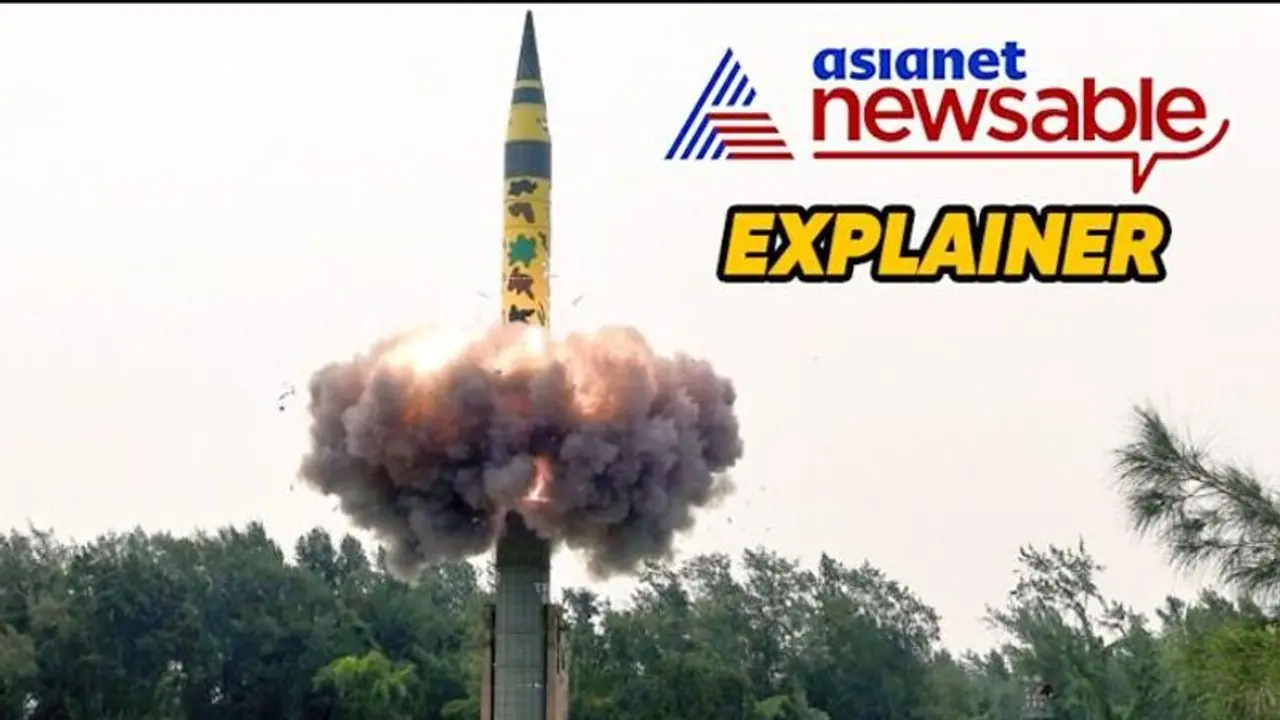DRDO introduces a 70-ton canisterized missile system, prompting speculation about its compatibility with Agni-V Mk-2 or the anticipated Agni-VI Inter Continental Ballistic Missile (ICBM). The Agni-V Mk-2's modified design suggests the launcher may be intended for a missile weighing over 60-65 tonnes
The introduction of DRDO's 70-ton canisterized missile system has raised many questions, Mostly about which missile it is supposed to work with -- whether it's meant for Agni-V Mk-2 or the eagerly awaited Agni-VI, Inter Continental Ballistic Missile (ICBM). A canisterized missile system refers to a setup where a missile is stored and launched from a sealed container or canister. Analyzing the details, multiple sources seem to be discussing the issue. One can make smart guesses about the purpose of this advanced launcher.

The Agni-V Mk-2 is well-known as a modified and lighter form of the original Agni-V ICBM. These changes are made to increase its reach to an impressive 8,000 km while lowering the payload to 40-45 tonnes. So a significant weight reduction from the original 50-55 tonnes. In light of this, it makes sense to assume that the 70-ton launcher is meant for a missile weighing over 60-65 tonnes.
This guess increases the chances of using the Agni-VI ICBM. The Agni-VI is thought to have a global range of 10,000-12,000 km, marking a significant advancement in India's strategic abilities. Still, the mystery remains -- why is the DRDO or the government keeping details about Agni-VI a secret?
One possible reason for keeping Agni-VI secret could be the fear of upsetting other countries globally. The expected range might worry Western nations and other geopolitical players, so the government may be proceeding carefully to avoid diplomatic issues. The strong impact and range of Agni-VI might worry countries globally, potentially changing the way power is distributed among nations.
A photo shows a big 70-ton system on a special fixture for storage and transport. The canister in the picture has a fake missile to mimic the real system. This makes us wonder: Does India have secret underground places with fixed ICBM launchers?
What we think is India strategically positions 'Tilter cum Launchers' for ICBMs underground, adding to the Mobile ICBM Launchers we already use. This two-pronged approach strengthens our land-based nuclear defence. Hidden static ICBM launchers underground bring various advantages, marking a shift from traditional ICBM Silos.
Silos are underground structures or containers designed to house and launch missiles, particularly Intercontinental Ballistic Missiles (ICBMs). They play a crucial role in a country's strategic defence system by providing a secure and concealed location for storing and launching long-range missiles.
Static ICBM launchers refer to fixed installations or platforms used for launching Intercontinental Ballistic Missiles (ICBMs) that are not designed to move. Unlike mobile launchers, which can be transported to different locations, static launchers are permanently situated, often in secure and well-protected facilities such as underground bunkers.
In essence, while both Static ICBM launchers and Silos are stationary, a silo specifically refers to an underground structure designed to house missiles, often with additional protective features, whereas a static launcher may be above or below ground and can include various launch platforms.
Advantages of Modular Static ICBM Launchers Vs Traditional ICBM Silos
1. Cost-Effective with Significant Impact: A major benefit is the cost-effectiveness of using modular static launchers. By choosing this method, India can notably cut down on the costs linked to building and maintaining facilities, compared to traditional silos. This wise financial approach ensures resources are efficiently directed toward other crucial defence efforts.
2. Small Space, Strong Defence: Unlike large silos that take up significant space, modular static launchers have a small footprint. This allows for strategic placement in densely populated areas, enhancing facility security. The lower visibility adds an element of surprise, discouraging potential adversaries and strengthening our national security.
3. Exceptional Survival: Putting static launchers underground offers an unmatched level of survival. Protected from air threats and attacks, these facilities guarantee the strength of our nuclear defence capabilities. The logistics chain also benefits, ensuring the system works smoothly even in tough situations.
4. Backup for Defense Strength: Adding modular static launchers brings an extra layer of backup to our defence plan. In a crisis, having various launch choices --both mobile and static systems -- strengthens our ability to respond well. This backup is crucial for our strategy, showing our dedication to national security.
To sum up, the introduction of DRDO's 70-ton canisterized missile system is a big step for India's defence. The strategic use of modular static launchers brings numerous benefits, from saving costs to increasing survivability.
As we deal with the complexities of modern geopolitics, this innovative approach ensures India stays ahead in technological prowess for nuclear deterrence. In the upcoming years, we can expect more advancements in this area, confirming our nation's dedication to a strong and flexible defence system.
